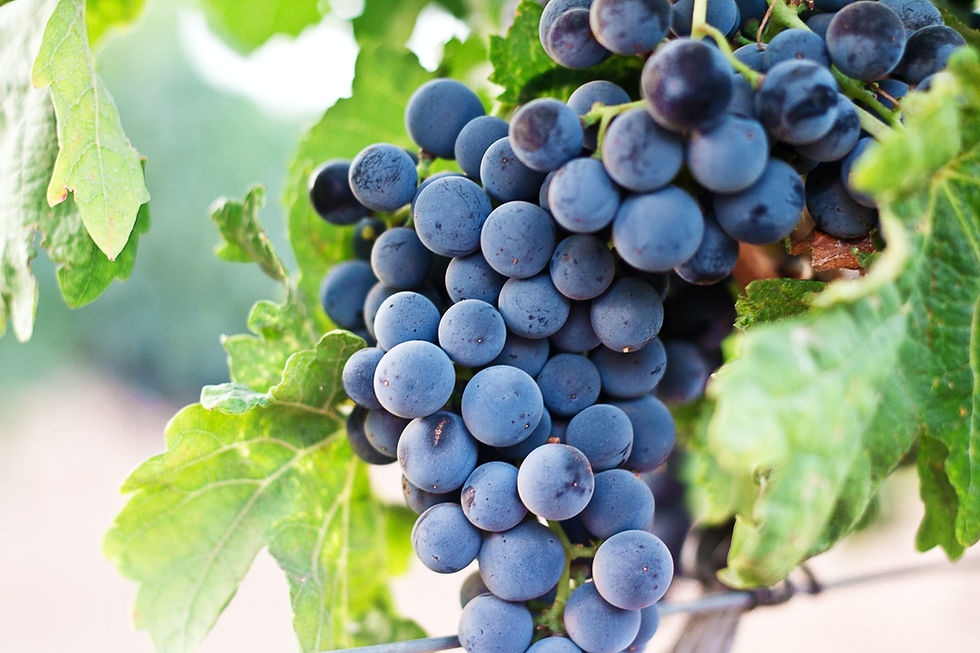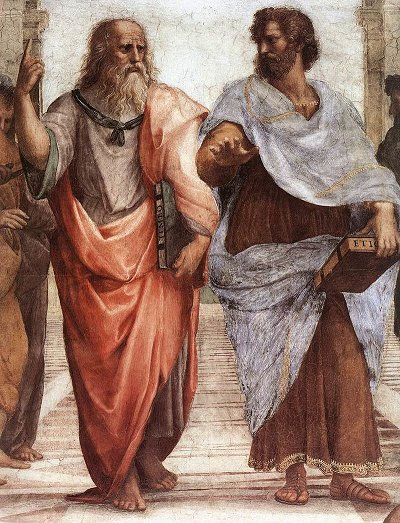Alchemists of Ancient Alexandria
- Sylvia Rose

- Aug 3, 2024
- 8 min read
Updated: Mar 21
Alchemy is a popular pursuit in the vibrant atmosphere of ancient Alexandria, Egypt. Early alchemists are natural philosophers working with metals and alloys, often focused on gold or silver making.

The alchemists of ancient Alexandria are part of the scholarly milieu of this cosmopolitan town. Works before 295 AD are largely unavailable due to various acts of destruction. Later practitioners such as Zosimos of Panopolis chronicle many of the alchemists and their work.
Medieval Islamic alchemists and philosophers help preserve many writings through translation into Arabic. They build local philosophy on alchemical traditions of the ancient Greeks and Egyptians. Translations of Alexandrian works are still being found in Muslim archaeology sites.

In roughly chronological order, alchemists of Alexandria include:
Mary the Jewess
Mary the Jewess or Maria Prophetissa is an early alchemist known from the works of Zosimos of Panopolis and other authors in the Greek alchemical tradition. She's believed to be one of the first alchemical writers, with works dating back to the first century.
She is credited with the invention of several kinds of chemical apparatus and is considered to be the first true alchemist of the Western world. Mary incorporates lifelike attributes into her descriptions of metal such as bodies, souls, and spirits.
Mary believes metals have two different genders, and by joining the two genders together a new entity could be made. This forms the basis for Renaissance alchemical thought exemplified in the heiros gamos of the Red King and White Queen.
Mary may be the first to apply the female/male designation to mercury/sulfur, two important elements of alchemy. They later form part of the tria prima.
Her work is revered by medieval Islamic alchemists, who call her "Daughter of Plato", another term for white or purified sulfur. She's also mentioned as Daughter of Pluto, after the Roman God of the Underworld where metals are created.

Chymes
Chymes is a Greco-Roman alchemist working in Alexandria prior to the third century, though his exact dates are known. Zosimos associates him with Mary the Jewess, placing Chymes c. 1st century.
Information about Chymes is limited to fragments found in the writings of Zosimos and Olympiodorus of Thebes. Some scholars suggest Chymes is the original founder of alchemy due the similarity of Chymes and chymistry, an archaic word for chemistry.

Zosimus connects Chymes with Mary the Jewess, indicating a likely origin in the early stages of alchemy. Chymes is credited with saying:
" ... One is the All, and it is through it that the All is born. One is the All, and if the All does not contain all, the All will not be born ... "

Moses of Alexandria
Moses of Alexandria, aka Moses the Alchemist or Moses, is an early alchemist who authors Greek alchemical texts in the first or second century. Referred to as "Moses the thrice happy," he's thought to have a Jewish background.
His writings show elements of monotheism and other Jewish beliefs. Moses the Alchemist is sometimes confused with biblical Moses. In ancient times, biblical Moses is credited with creating disciplines such as philosophy and medicine. Magical papyri are also linked to him.

The writings ascribed to Moses of Alexandria encompass alchemical recipes using mercury, copper, arsenic; water distillation; and guidelines for chrysopoeia.
Agathodaemon
Agathodaemon (c. 300 AD) is an alchemist in late Roman Egypt, whose existence is known only through fragments cited in medieval alchemical writings, notably the Anepigraphos. The fragments reference his works, which are believed to date back to the 3rd century.

He's chiefly recognized for his various explanations of elements and minerals, particularly his method for producing silver and a substance he terms 'fiery poison', identified tentatively based on his description as arsenic trioxide, a toxic amphoteric oxide.
Paphnutia the Virgin
Paphnutia the Virgin (c. 300 AD) is an Egyptian alchemist mentioned in the correspondence between alchemist Zosimos of Panopolis and his sister Theosebeia, who was also an alchemist. In the letters Zosimos disapproves of Theosebeia's interaction with Paphnutia.

Usually supportive of female alchemists, Zosimos sees Paphnutia as uneducated, practicing alchemy incorrectly. Limited information is available about her. It's speculated Paphnutia may have been associated with an alternate alchemical school of thought.
Cleopatra the Alchemist
Cleopatra the Alchemist (c. 300 AD) is a Greek alchemist, writer, and philosopher. She works on practical alchemy experiments, recognized as one of four female alchemists capable of creating the Philosopher's Stone. The invention of the alembic is attributed to her.

One of the reasons for the development and spread of alchemy is the production of glass. Glass vessels can be custom made. They're see-through, like the stomach of Shennong, and contain even caustic metals like mercury. Glass gains popularity during the Roman Empire.
Cleopatra the Alchemist is active in Alexandria during the 3rd or 4th century AD, associated with the alchemical tradition represented by Mary the Jewess and Comarius. These alchemists develop equipment for distillation, sublimation and other processes.
Comarius
The name Comarius comes up usually in reference to the "Book of Comarius" praising Cleopatra the Alchemist as a divine teacher. Debates continue as whether the wrings are by one person or several, containing conversations of Cleopatra with a group of philosophers.
An excerpt reads:
"Listen now and understand and judge correctly what I say: take of the four elements the sublime arsenic and the humblest arsenic and the most sublime, white and red, in equal proportion, male and female, so that they remain united one to the other. Just as the bird incubates and brings the eggs to perfection by its heat, so you, too, must incubate and polish your work by taking it outside, watering it with divine waters, [warming it] in the sun and in burning places ...

" ... you must cook it over a slow flame with the virginal milk and keep it from the smoke ... And lock it in Hades and stir it carefully until its structure solidifies and it does not spill out due to the fire. Then it you take out and when the soul and the spirit have joined one another and become one, you must pour it into solid silver, and you will have gold [of such quality] not even found in the coffers of kings."
Zosimos of Panopolis (c. 300)
Zosimos of Panopolis (c. 300), also known as Zosimus Alchemista or Zosimus the Alchemist, is a Greek alchemist and Gnostic mystic in Egypt. He's a wealth of information about the Alexandrian alchemists. First mention of the Philosopher's Stone appears in his works.

He writes the oldest known books on alchemy, which he calls "Cheirokmeta," using the Greek word for "things made by hand." Parts survive in original Greek and in translations to Syriac or Arabic. In 1995 several such works are found at an Islamic archaeological site.
He is one of about 40 authors represented in a compendium of alchemical writings compiled in Constantinople in the 7th or 8th century AD. A prolific writer, his chronicles include contemporary beliefs, early and concurrent alchemists, wine infusions and Gnostic thought.

Pseudo-Aristotle
Pseudo-Aristotle is a general name for authors of philosophical or medical treatises who attribute their work to the Greek philosopher Aristotle, or whose work is later attributed to him by others. Corpus Aristotelicum applies to both authentic and contrived works of Aristotle.
Falsely attributed works are known as pseudepigrapha. In alchemy a number of "Pseudo-" names appear through the years.

They're often a group of authors, less likely one anonymous practitioner. Pseudo-Geber is a famous Pseudo of the Middle Ages.
Pseudo-Democritus
Pseudo-Democritus is the name used by unidentified authors of Greek texts wrongly ascribed to the pre-Socratic philosopher Democritus (c. 460–370 BC). These include the lost works On Sympathies and Antipathies and Artificial Substances (Greek: Cheirokmēta).

Neo-Pythagorean physician pharmacist Bolos of Mendes (3rd century BCE) is one author of the writings. Also included are Greek alchemical texts attributed to Democritus but thought to be by an anonymous author c. 54–68 AD. These are the earliest known alchemical works.
In their original form, they are a series of four books on dyeing: two books on dyeing metals gold and silver, one on dyeing stones, and one on dyeing wool purple. Later Greek alchemists cite them frequently and write several commentaries on them.

Ancient Alchemical Recipe: Preparation of Sunstone
"Mix dragon’s blood, ordinary sap of balsam tree, resin of Palestine – or if that is not at hand (resin) of Tomi – and Pontic alkanet; and soak the opened-up crystal therein. Now, if the preparation is unmixed, sunstone comes forth. If, however, a little fluid pitch is mixed with the above mixture, then ruby is likely to result."
Olympiodorus the Younger
Olympiodorus the Younger (circa 495 - after 565) is a Neoplatonist philosopher, astrologer, and educator residing during the early period of the Byzantine Empire. In 529 AD Justinian's Decree of 529 AD forces closure of Plato's Academy in Athens and other pagan institutions.

Olympiodorus is the last pagan upholding Platonist teachings in Alexandria. He's known for alchemy writings as well as Neoplatonist leanings. Olympiodorus quietly teaches the works of Plato amid a curriculum imposed by authorities. His students continue his work after his death.
.
Stephanus of Alexandria
Stephanus of Alexandria (c. 580 – c. 640) is a philosopher and writer, teaching Neo-Platonist philosophy as well as alchemy, astrology and astronomy. He's considered the last intellectual of the Alexandrian academic tradition before Islamic conquest of Egypt 642 AD.

Around 610 Stephanus moves to Constantinople. The political atmosphere in Alexandria is uncertain due to the destruction of the Roman Empire and various attacks by Islamic forces. Stephanus is instrumental in purveying the Alexandrian school of thought in the East.
He appears in contemporary writings from Constantinople as one of the most important alchemists. He's known for his poem De Chrysopoeia (On how to make gold), reproduced in several ancient works.

Non-Fiction Books:
Fiction Books:
READ: Lora Ley Adventures - Germanic Mythology Fiction Series
READ: Reiker For Hire - Victorian Detective Murder Mysteries




